There is no doubt that as pet parents we adore our pets; however, sometimes our love may tempt us to give our 4-legged furry friend tasty treats quite often to demonstrate our love. But after a while, all these extra meals and treats can become a serious issue for your pooch.
Today, pet obesity has become an epidemic and a cause of serious concern. Estimates show that over 53% of dogs in America are overweight or obese, with around 40% to 45% of dogs between 5 and 11 years being overweight.
What Is Dog Obesity?
Obesity is essentially extra body weight along with extra body fat. According to AKC, if the weight of a dog is 15% more than the breed’s ideal weight, then he is considered to be overweight and if the weight is more than 30% of the ideal weight, then the dog is considered to be obese. Typically, obesity manifests by fat accumulation predominantly in the chest and abdomen area, which is easily visible.
When we consider dog obesity, the first thought is that your pet is packing extra pounds because of excess food and not enough exercise. While it is true to a large extent that if your pet eats foods rich in sugars and fats and does not have sufficient exercise, he will become overweight. However, there are many other factors that can contribute to your pet becoming overweight or even obese such as age, genetics and health conditions.
Every dog is different in terms of its nutritional requirements and metabolism, which slows as your pet ages. For instance, older dogs that have been neutered and live indoors predominantly are prone to obesity. Also, some dog breeds are genetically inclined to gaining weight and becoming obese.
Risks of Obesity
Not only does being overweight hamper a dog’s movement, but makes them more prone to various obesity-related and other diseases. It also reduces your pet’s lifespan. For example, a study showed that in Labrador Retrievers, being moderately overweight can reduce their lifespan by 2 years compared to dogs that are lean and fit.
Today, there is scientific evidence to show that apart from storing calories and adding to the body mass, fat tissue produces hormones that cause inflammation and creates oxidative stress on the tissue, causing serious diseases, which can affect your pet’s health, as well as lifespan.
In fact, obesity is a chronic condition that can increase the risk for various serious conditions such as hypertension, diabetes, liver disease, heart disease, urinary bladder stones, respiratory problems, orthopedic problems, osteoarthritis and different types of cancer. In this article, we’ll discuss 19 dog breeds that are prone to obesity.
Obesity-Prone Dog Breeds
Scottish Terrier
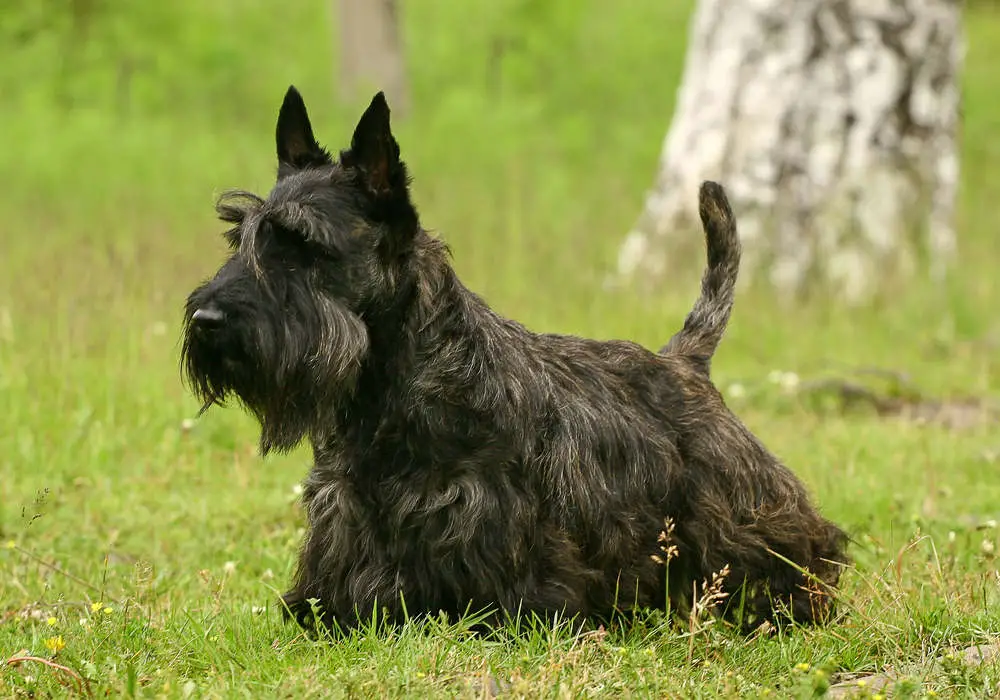
The Scottish Terrier is a small-sized, short-legged pooch with a distinctive wiry topcoat and a soft and dense undercoat, a beard, erect ears and tail and bright eyes. While Scotties have compact, well-built bodies, they are prone to obesity.
Scottish Terriers tend to suffer from genetic health conditions, including hypothyroidism, which reduces the metabolic rate, causes the Scottie to become lethargic and result in weight gain.
Also, as they grow older, Scotties tend to become plump, which can result in obesity, if left unchecked. So, to keep your Scottie healthy and fit, it is vital to avoid overfeeding them, maintain a well-balanced diet and regular exercise routine.
Cairn Terrier
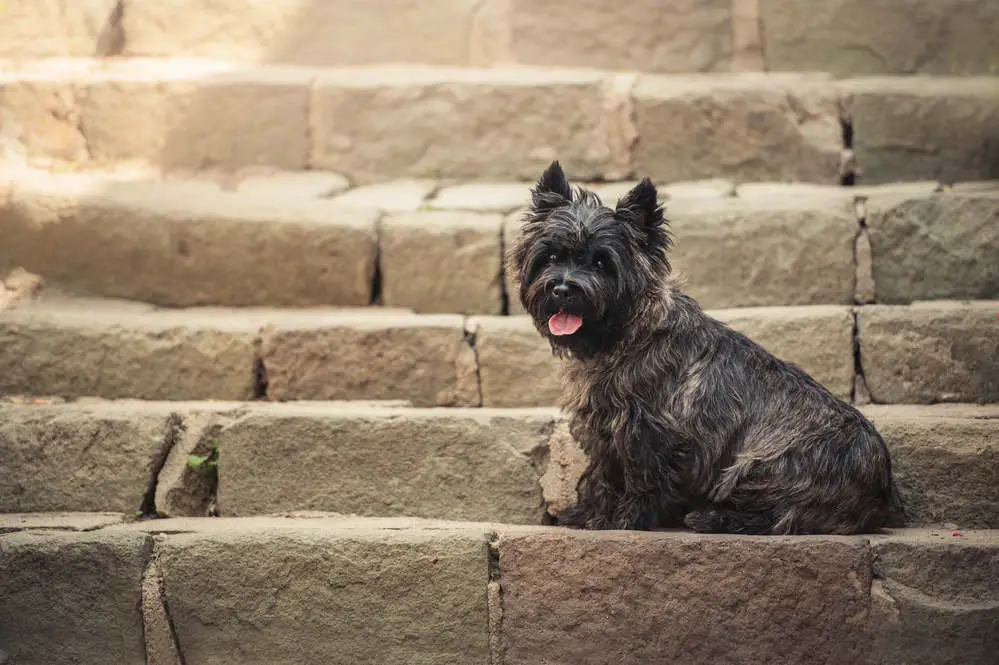
Cairn Terriers are small-sized working terriers that are originally from the Isle of Skye, Scotland. The breed is associated with intelligence, courage and tenacity, which made them ideal for farmers, who used Cairns to eliminate vermin from their properties. The breed got its name because they chased and hunted their quarry between the Scottish Cairns.
Cairn Terriers have unique features including a wide, short head, short-legged body and a shaggy harsh double-coat with a wiry topcoat and soft, downy undercoat. Despite being small in stature, Cairn Terriers run the risk of becoming fat and even obese. The breed is prone to hypothyroidism, which causes slow metabolism and causes the dog to become lethargic and overweight.
So, it is very important that as a dog owner, you must ensure that your Cairn Terrier gets adequate exercise and you must also watch your pet’s calorie consumption and weight, limit his treats to prevent him from becoming overweight and obese.
Westie
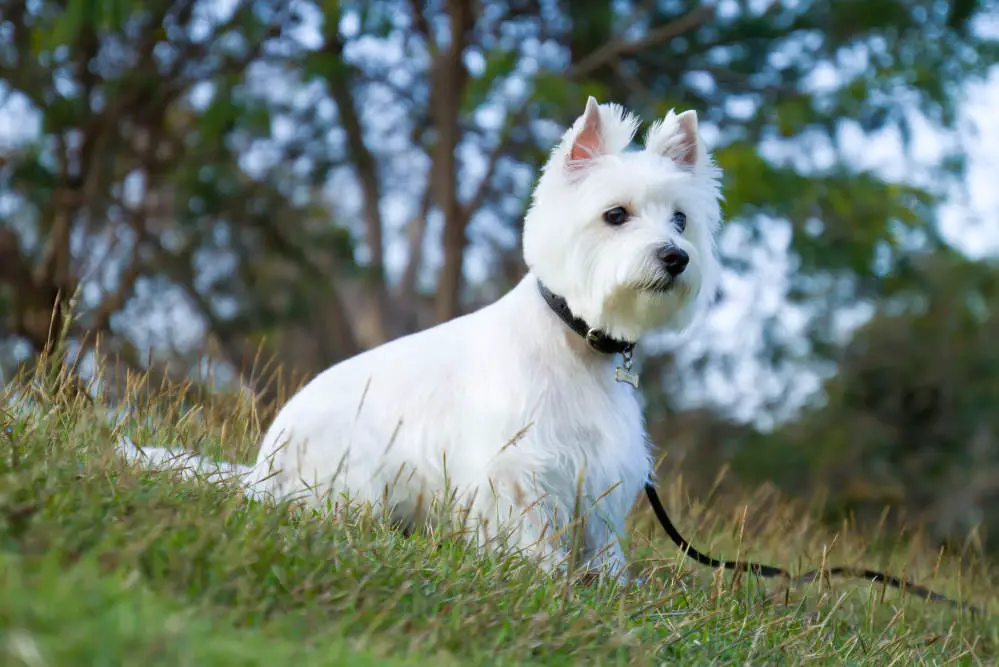
Commonly known as a Westie, the West Highland White Terrier is a Scottish dog breed, which has a characteristic harsh white topcoat and soft undercoat, which is hypoallergenic. Westies are around 10 to 11 inches tall, with a compact body, carrot-shaped tail and dark eyes.
This strong and tough medium-sized terrier is very intelligent, active and quick to learn. Bred to hunt rodents, Westies have a high prey drive. While in general, Westies are a healthy breed; however, they run the risk of becoming overweight if they are overfed and don’t have enough exercise. And, since they are chunky dogs, they can easily become overweight, with their fur growing and masking their shape.
While Westies are quite energetic, they don’t need as much exercise as some other breeds. Just a walk 1-2 times in a day or playing fetch inside your hallway is sufficient to keep your Westie healthy, fit and happy.
Shetland Sheepdog
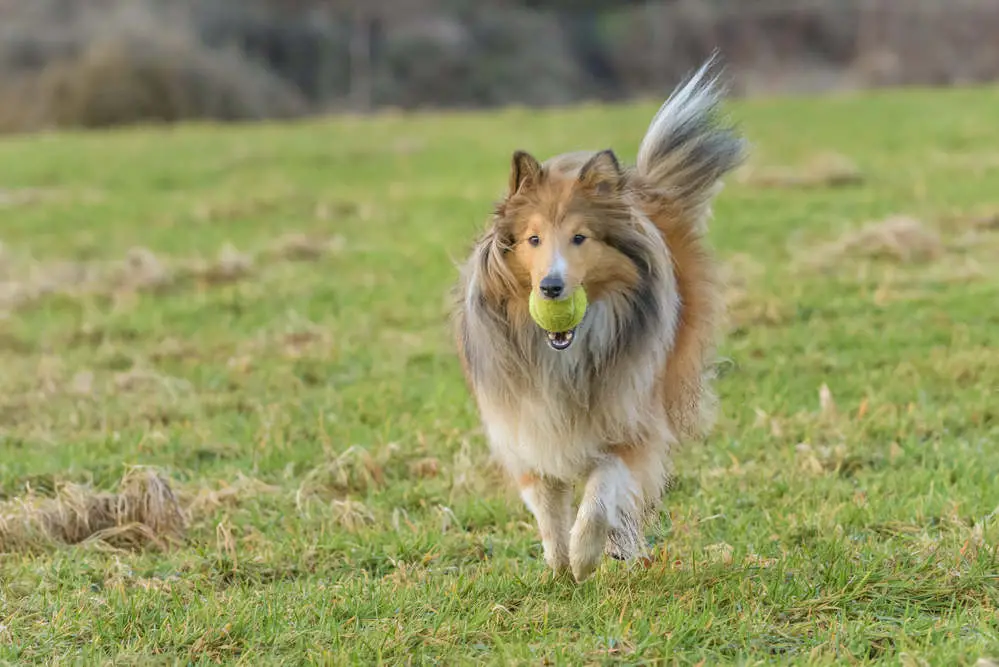
Popularly known as the Sheltie, Shetland Sheepdogs are small, agile and active dogs. Bred by farmers as herding dogs, Shelties are originally from the remote Shetland Islands and look very similar to the Rough Collie. Shelties have a long, straight and harsh topcoat and a dense undercoat and come in various colors like blue merle, sable with white markings and black.
Shelties are very active and energetic dogs and you may think that they don’t get overweight. However, Shelties love food and eat happily. They also love to spend their time curled up on the couch or begging for food.
And, if you over-treat your dog, soon your Sheltie is sure to become pudgy and fat. Also, Shelties are prone to hypothyroidism, which can make them lazy, lethargic and pile on the pounds quickly, which can lead to various health problems and also reduce their lifespan.
Basset Hound
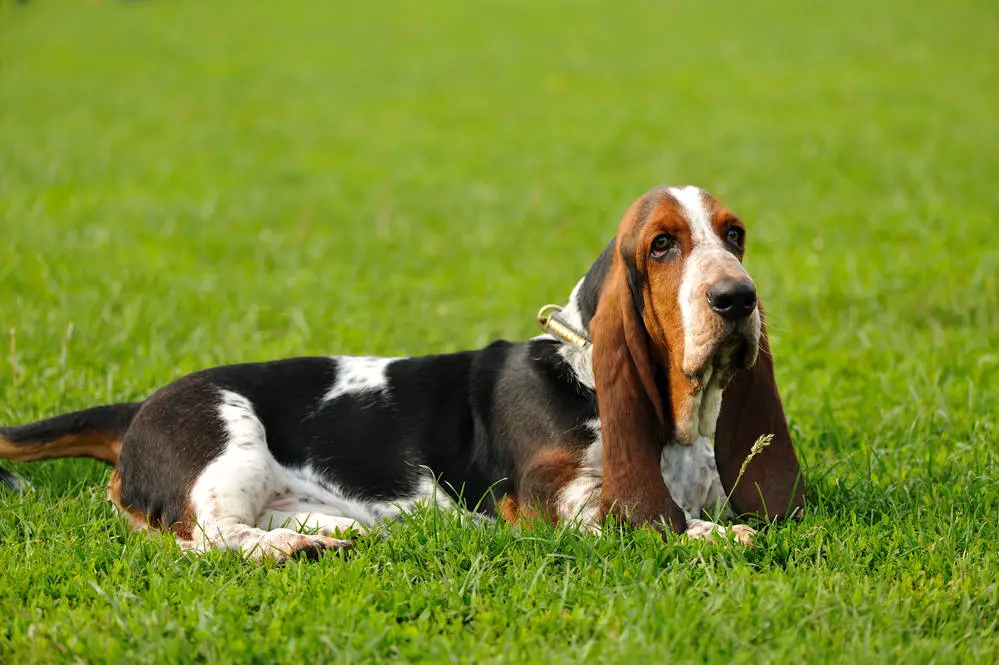
Belonging to the hound family, the short-legged Basset Hound is a scent hound, originally bred for hunting. Basset Hounds are popular for their large, dome-shaped head, long, velvety ears, wrinkled brow and sad, mournful eyes.
Built for endurance, this breed is prone to laziness when they are indoors and tend to gain weight, leading to them becoming obese. Since Basset Hounds are not built for speed, they don’t like to run or overtly exert themselves. These dogs are hearty eaters and are sure to overeat if they have the opportunity.
And, because they are not very active, they can gain weight very quickly and become obese, causing joint, leg and back problems. It is a good idea to portion your pet’s food according to his size and weight rather than the recommendation on the bag. Also, make sure that your Basset gets regular exercise to keep him fit and healthy.
Beagle
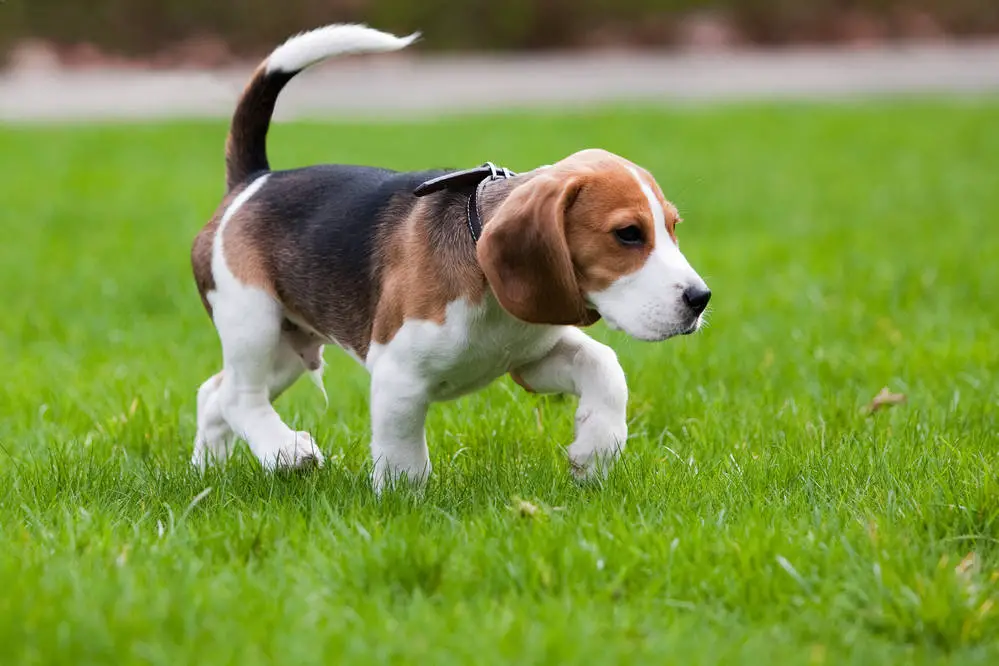
Beagles are small-statured, hardy and compact dogs that were bred as scent hounds to track and hunt small game like hares, rabbits, etc. These fun-loving and merry dogs are highly energetic and need loads of exercise. However, these dogs have hearty appetites and love to eat.
Beagles are prone to obesity and too little exercise, combined with a lot of food causes them to become overweight very quickly, especially because they have a slower metabolism, tend to become more sedentary and lose muscle mass as they grow older.
Apart from becoming fat, Beagles are genetically prone to developing lipomas or fatty tumors, are at a greater risk of getting injured and developing serious diseases.
Also, since Beagles love food, they will eat whatever they can lay their paws on. They are also notorious scavengers and tend to gobble up any food they find under the table or in the garbage.
So, it is extremely important that you control the portions of your pet’s food, limit his treats, keep an eye that he doesn’t get to the scraps and your trash and get sufficient exercise.
Cavalier King Charles Spaniel
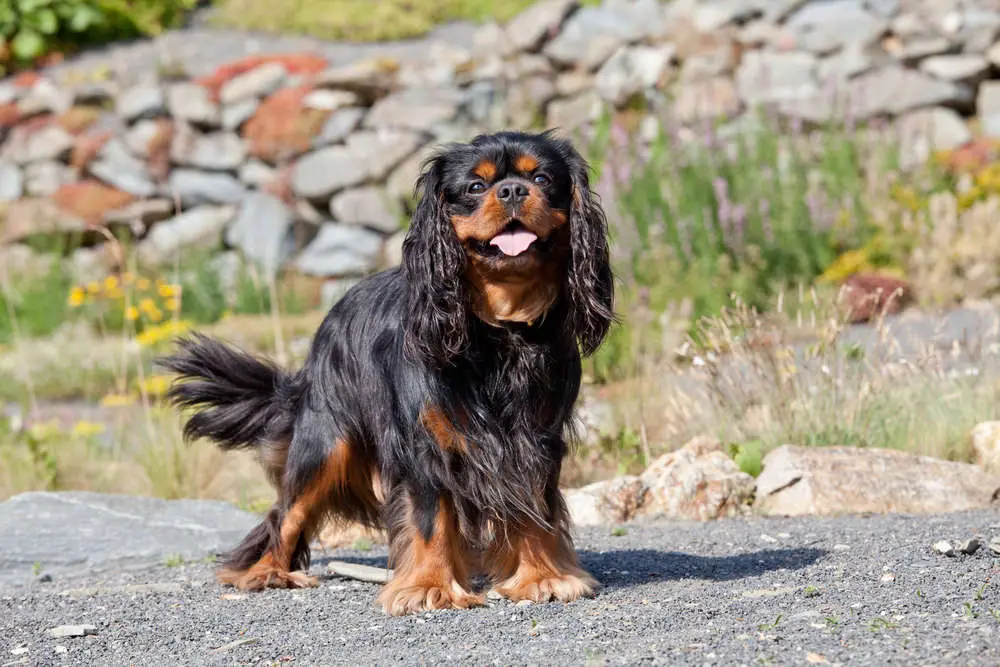
Considered being the noblemen of the doggie world, Cavalier King Charles Spaniels are beautiful, regal dogs. Less than 13 inches in height, this toy spaniel has a gentle and sweet face, large round eyes and a long rich silky coat that makes them truly adorable.
Their cute and adorable looks are sure to melt your heart and make their owners pet them and treat them continuously and so, it’s not surprising that the Cavalier is likely to pile on the pounds and become fat very easily.
Make sure that instead of giving your pooch yummy, high-calorie treats, give him fewer low-cal ones and make sure that you encourage him to play and go on long walks to keep fit and healthy.
Dachshund
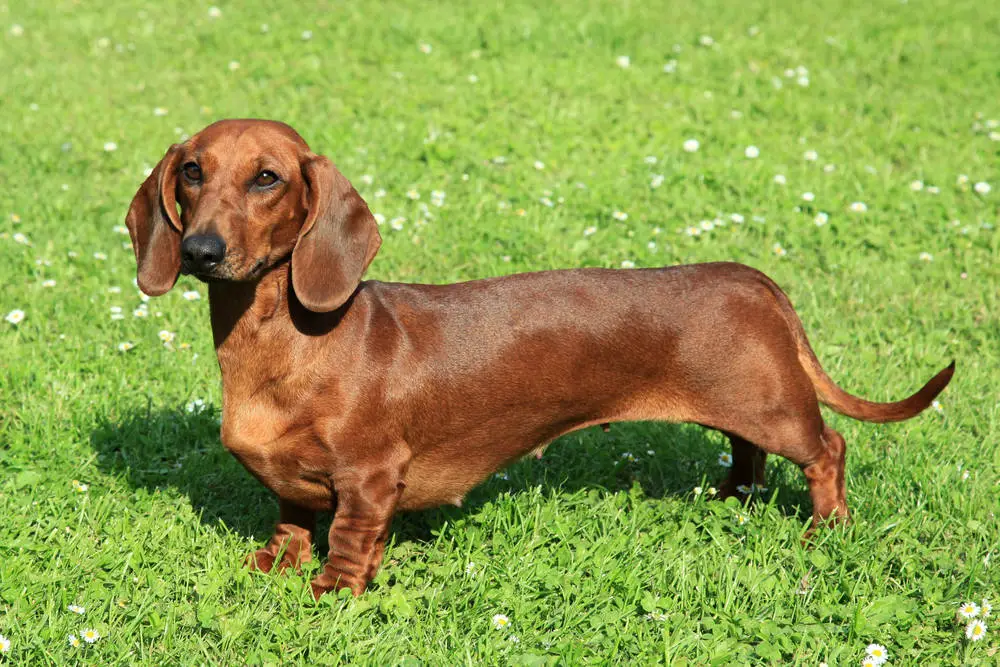
Also called the sausage dog, badger dog or wiener dog, Dachshunds are long-bodied, short-legged hound-type dogs. In general, dachshunds are quite lazy and if allowed, will happily lead a life of inactivity. This low-to-the-ground breed is highly prone to obesity compared to other types of dog breeds.
The long backs and short legs of the dachshund combined with excess fat can make these dogs prone to spinal problems and IVDD (intervertebral disc disease), which can lead to paralysis. Since originally Dachshunds were hunting dogs, they require regular activity and exercise to stay active, fit and healthy.
Their short legs make it difficult for dachshunds to run for very long and so around 20 to 40 minutes of walking is sufficient to burn the extra calories. Also, it is important to regulate your Dachshund’s diet and avoid overfeeding him to prevent obesity.
Cocker Spaniel
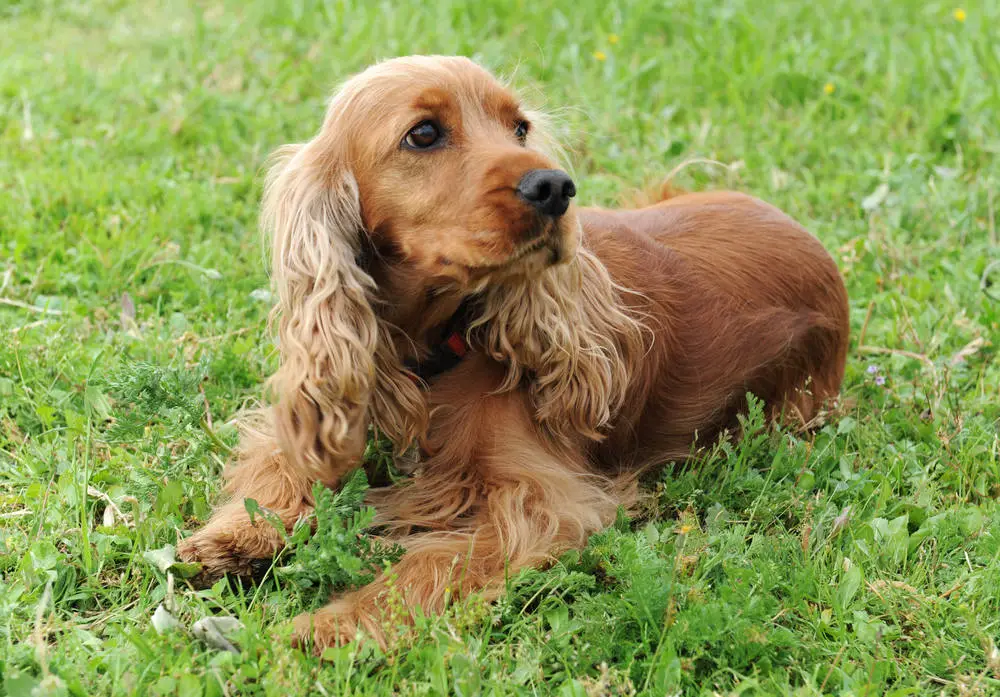
The English Cocker Spaniel is a sporting dog with its compact build, soft contoured head, lush long velvety ears and melting dark eyes is a charming and merry family pet. Typically, Cocker Spaniels must weigh around 20 to 30 lb; however, they are prone to obesity, especially as they grow older or have been neutered.
As the breed matures and grows older, Cocker Spaniels tend to become more lethargic and their activity decreases, causing them to become overweight and even obese. So, it is important that as a pet parent, you must adjust your pooch’s diet and his calorie intake to make up for the reduction in energy.
Also, Cocker Spaniels are prone to hypothyroidism, where the thyroid hormone is not produced adequately by the body causing fatigue, lethargy and weight gain.
Labrador Retriever
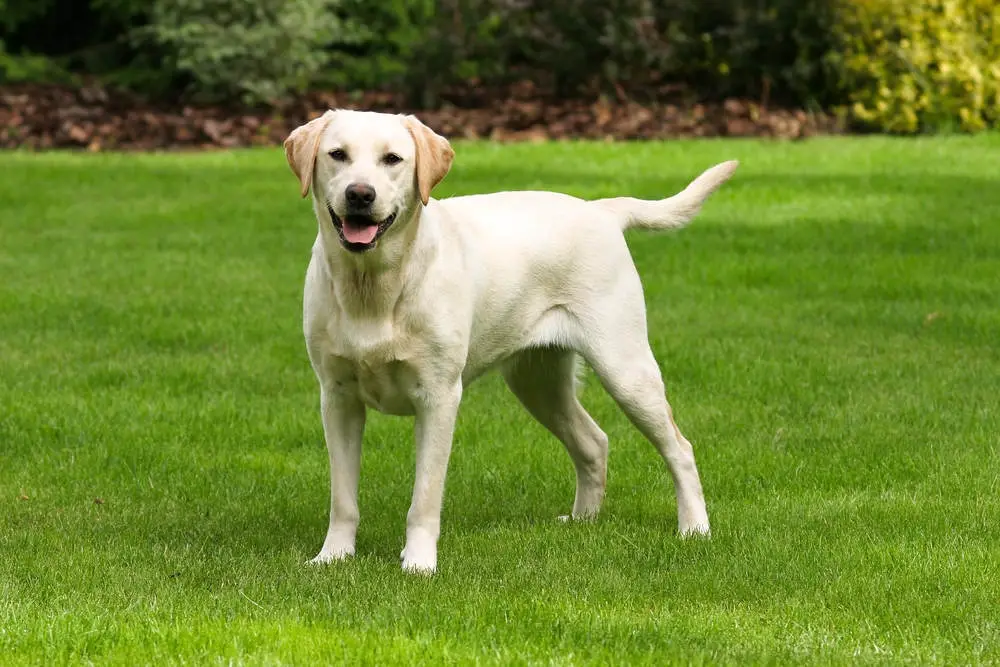
Labrador Retrievers or Labradors are the most popular family dogs. These medium-sized dogs come in colors like fawn, chocolate and black with a wide head and kind eyes.
These intelligent and friendly dogs are quite greedy and can eat anything they lay their paws on. The brain of the Labrador is wired to overeat and they have insatiable appetites.
While quite a well-behaved breed, Labs are known to steal food that’s left unattended, lick your plate clean or dive into your trash and gobble up any food they can find. When you’re eating your Labrador is sure to be gazing at you with his meltingly brown eyes imploring for food.
And, their huge appetites make these dogs overweight and obese and in fact, this breed is listed as being one of the fattest dog breeds.
As a Lab owner, you must manage your pet’s diet consistently and cut back his food if he’s gaining weight and ensure that there are no table scraps or leftovers in the trash to add to his calorie intake.
Labs love outdoor activities like playing, walking, swimming, etc. and so it’s a good idea to ensure that they get their daily exercise to keep them fit and healthy.
Bulldog
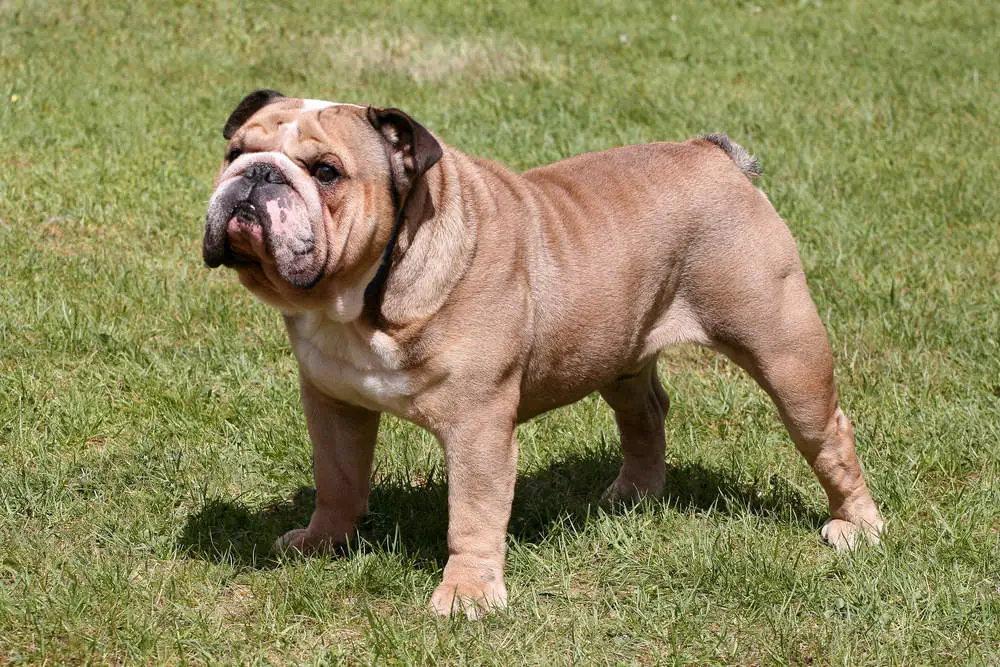
Known as the British Bulldog or English Bulldog, Bulldogs are medium-sized dogs with a hefty and muscular build, distinctive wrinkled face and pushed-in nose. Bulldogs are quite lazy and don’t like physical activity, which is why they gain weight quite easily.
These brachycephalic or flat-faced dogs are “couch potatoes” and prefer to curl up next to you and sleep, rather than running around or playing. Bulldogs have vociferous appetites, love to eat and will eat any food given to them and so, they gain weight very quickly and struggle to lose it.
And, because of their flat faces and short noses, they stay away from strenuous exercises because they get tired very easily and find it difficult to breathe, which makes shedding weight even more difficult.
So, it is important that apart from regular exercise, you need to ensure that your Bulldog has a well-balanced, calorie-controlled diet to prevent any weight gain.
Yorkie
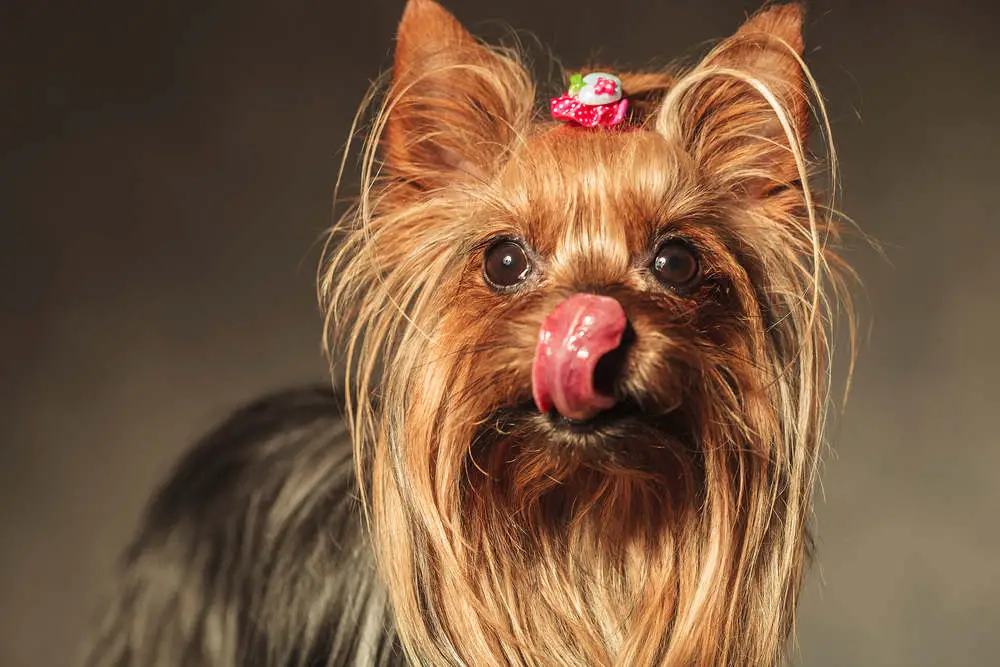
Yorkshire Terriers or “Yorkies” as they are popularly known are small-statured, dainty dogs. Weighing less than 7 lb, this toy-sized, compactly-built terrier is characterized by its floor-length, silky coat in rich colors. Although small in size, Yorkies also run the risk of becoming overweight and are prone to obesity.
Loving owners end up feeding their Yorkie, apart from which these dogs can be quite sneaky and steal food and treats at any given opportunity. Obesity can be quite dangerous for these small dogs and can cause several health problems. So, sufficient exercise and a well-balanced diet are necessary to keep your Yorkie active, healthy and fit.
Boxer
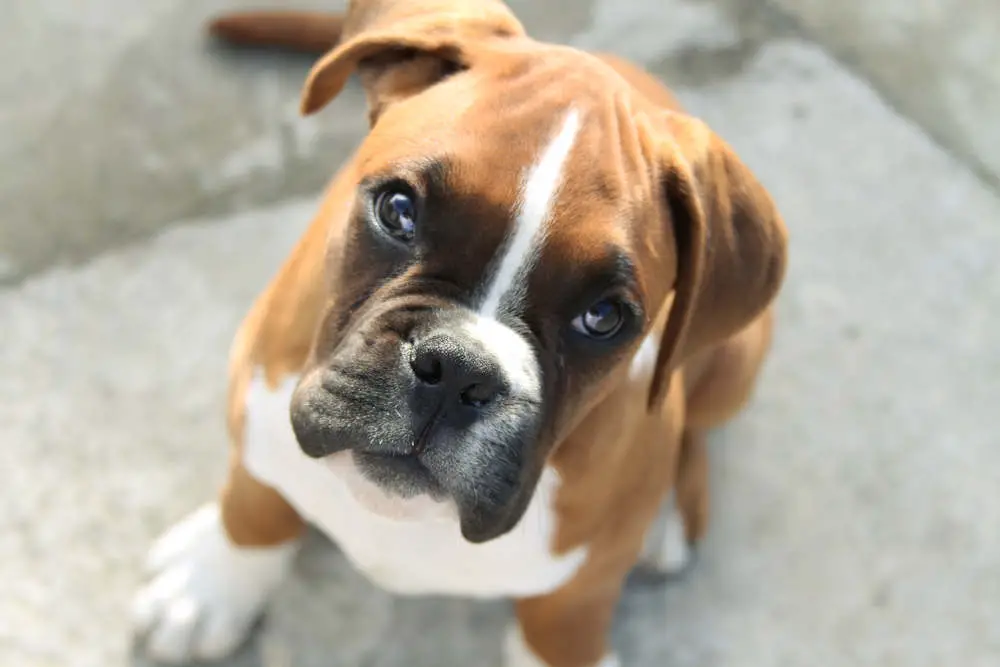
Boxers are medium- to large-size dogs that originated from Germany. This breed has a short, smooth and tight coat and comes in colors such as brindle, fawn or white and may or may not have white markings. These strongly built dogs with their wrinkled forehead, dark brown eyes and an alert look, have a smooth and graceful gait.
While Boxers are generally active dogs and love to walk and run, they are prone to hypothyroidism, which reduces their metabolism, causing weight gain and thus, obesity. Also, since the Boxer is naturally muscular and well built, if he does not have sufficient exercise, the muscle can quickly turn into flab.
So, apart from ensuring that your Boxer has a good exercise routine and a healthy, well-balanced diet, you should get your pooch tested every year to rule out hypothyroidism. Your pet should do well with long walks, jogs or running off the leash to keep fit.
Golden Retriever
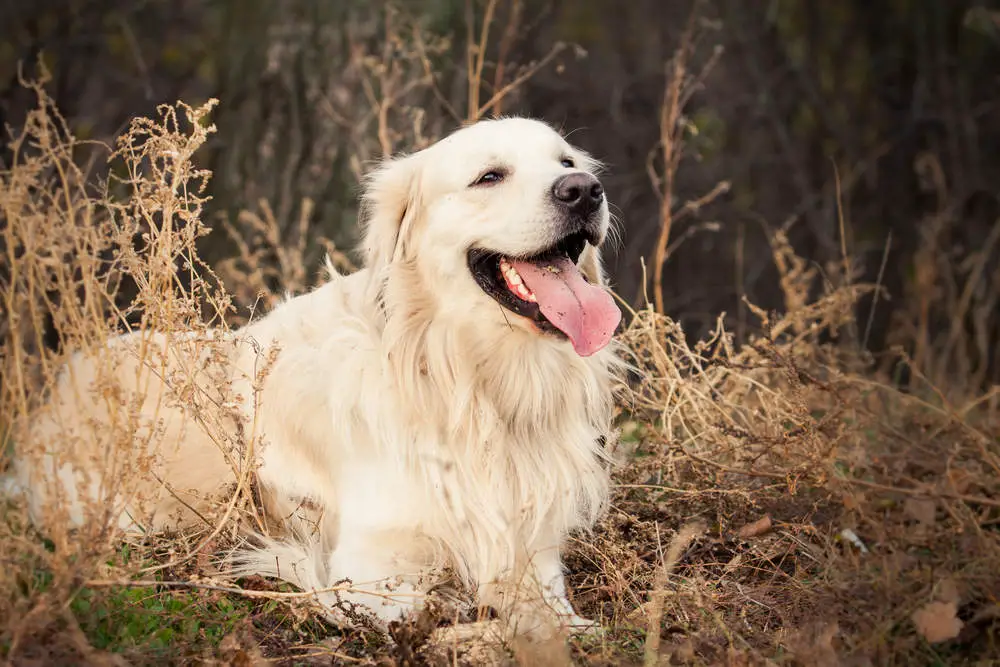
Golden Retrievers are medium-sized dogs with a sturdy, muscular build. Their lustrous golden coat, intelligence and friendly attitude make Goldens one of the most popular breeds among dog owners.
While Golden Retrievers are active dogs, they love the idea of being indoors curled up on the couch and have a tendency to become overweight, even obese.
Genetically, Goldens are prone to obesity and in fact, according to a study, it was found that around 62.7% of Golden Retrievers in the United States are overweight or obese. They love to eat and are quite skillful when it comes to begging for food and treats from their loving owners, which adds to the weight gain woes.
Obesity can cause several serious health conditions in Goldens including heart, kidney, liver and respiratory diseases, high blood pressure, digestive problems, diabetes and also various types of cancer.
Excessive fat can also cause hip and joint problems. So, it is important to maintain a regular and strict diet and ensure that your Golden gets regular exercise every day to keep his weight healthy.
Rottweiler
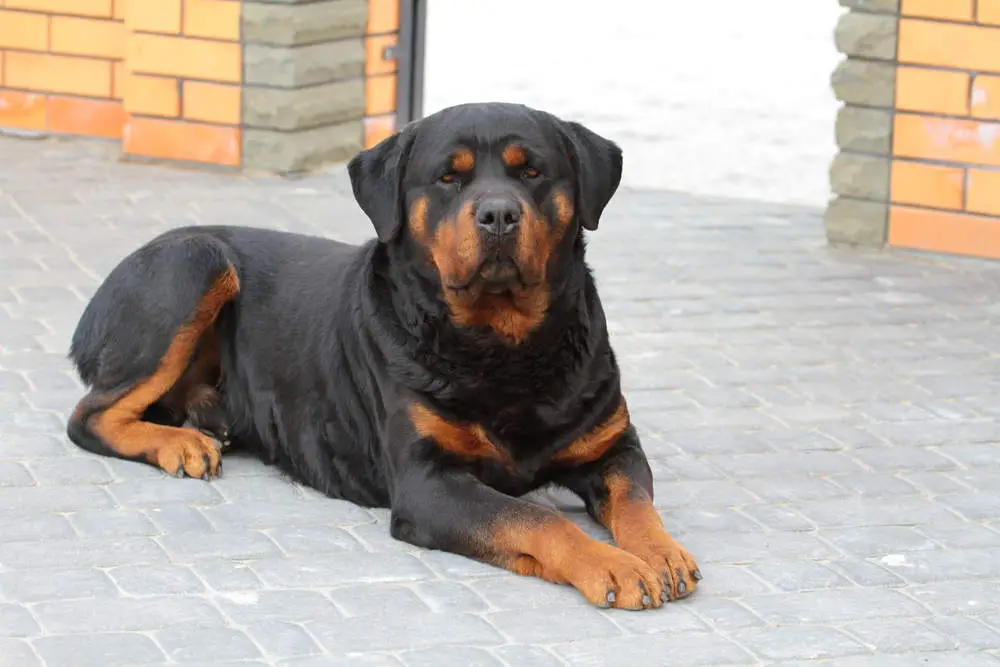
Descended from mastiffs and bred to drive cattle originally, Rottweilers are medium to large-sized dogs that were later put to work to pull carts. This robustly built working dog is very strong and loves physical activity. Their size makes it very easy for Rotties to pile on weight and become obese.
Further, the breed is prone to hypothyroidism that causes them to put on weight very easily. And, coupled with being overfed with treats and other foods, they can become overweight and lethargic. Rotties are prone to elbow and hip dysplasia, internal organ conditions and cancers, especially if they become overweight.
So, if you notice any unexplained weight gain in your pet, have him checked by the vet and look for any underlying condition. Being bred as a working dog, Rotties love all types of physical activity. So, adequate exercise and a calorie-controlled diet can help to prevent your Rottweiler from becoming obese.
Pug
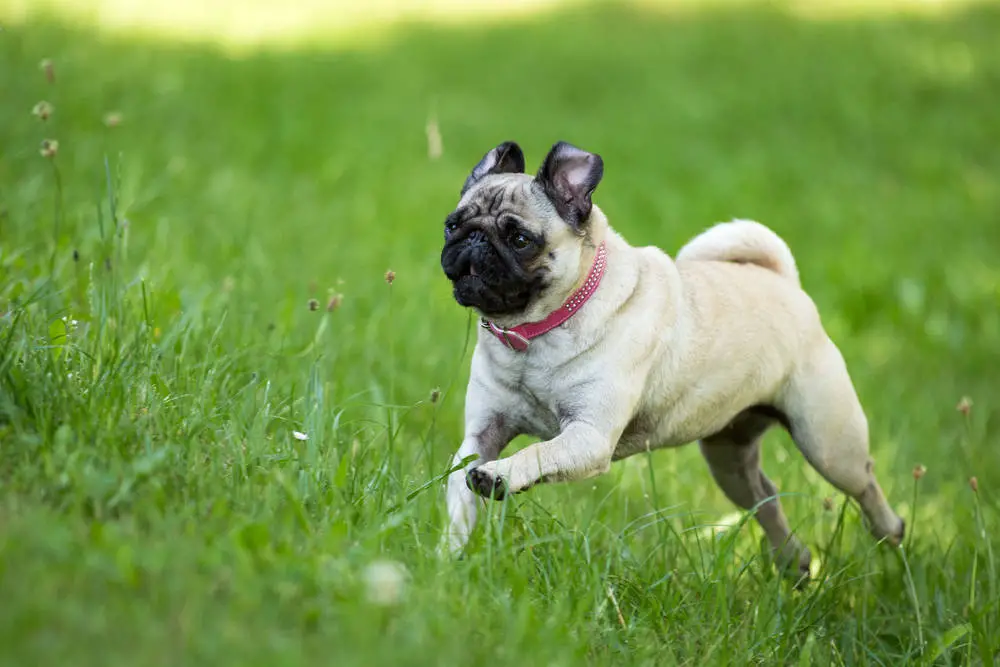
With a distinctive “fist-like” wrinkly face and a curled tail, the compact Pug has a square-shaped body with well-developed muscles. This squat, sturdy breed is extremely popular with pet owners across the world.
Pugs are genetically inclined to be very lazy and have a higher risk of becoming obese. They are naturally lethargic and idle dogs, which makes them less inclined to be active.
Also, their flat face and pinched nose, make it difficult for pugs to manage even the gentlest type of exercise. Even mild exertion causes these small pooches to become overheated and start panting, which makes most owners carry their Pug everywhere.
In addition, Pugs are greedy eaters and tend to overeat at every opportunity, which causes them to become obese, especially if their calorie intake is not monitored carefully.
Obesity can cause several health problems for your Pug, especially worsening their breathing problems and reducing their lifespans. To keep your Pug lean and healthy make sure to maintain a strict diet and a mild, but regular exercise routine.
Mastiff
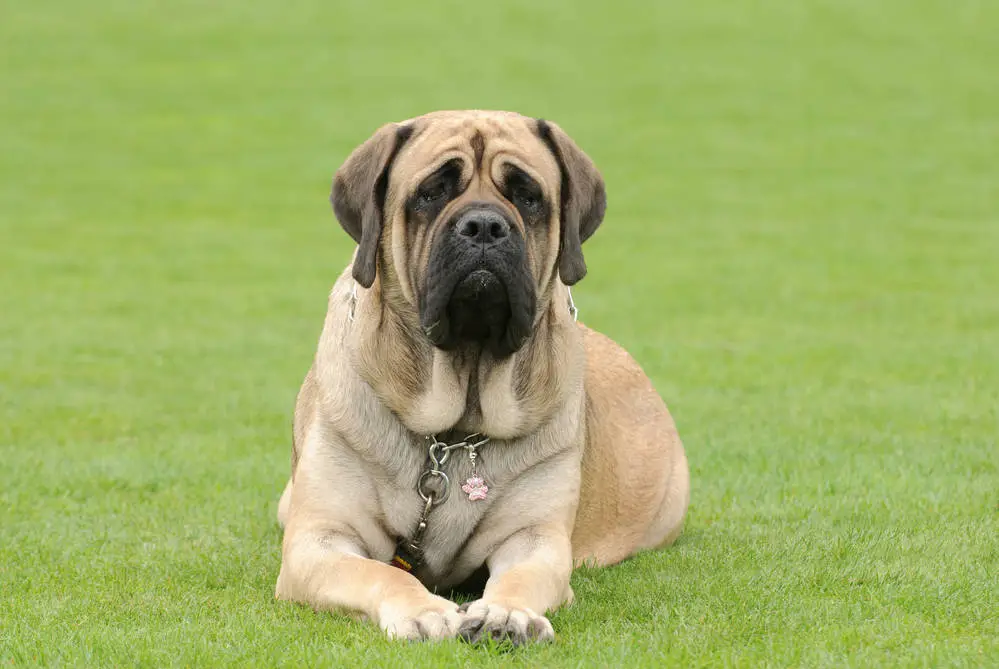
Considered to be the largest dog breed in the world and weighing around 220 lb or even more, the English Mastiff is a massive dog. This huge and heavy-boned dog is one of the oldest dog breeds and is known for its courage. However, Mastiffs are also renowned for being lazy, slow and are not very high on energy.
These huge dogs don’t like running about and resist any form of strenuous exercise. In fact, they need a lot of coaxing to go for regular walks. Also, because of their size, these dogs tend to get overheated easily.
Mastiffs are prone to gassiness and bloating, which can become a serious digestive condition if your pet is obese. These dogs are at a risk for hereditary heart disease, which can worsen if they are overweight or obese.
Newfoundland
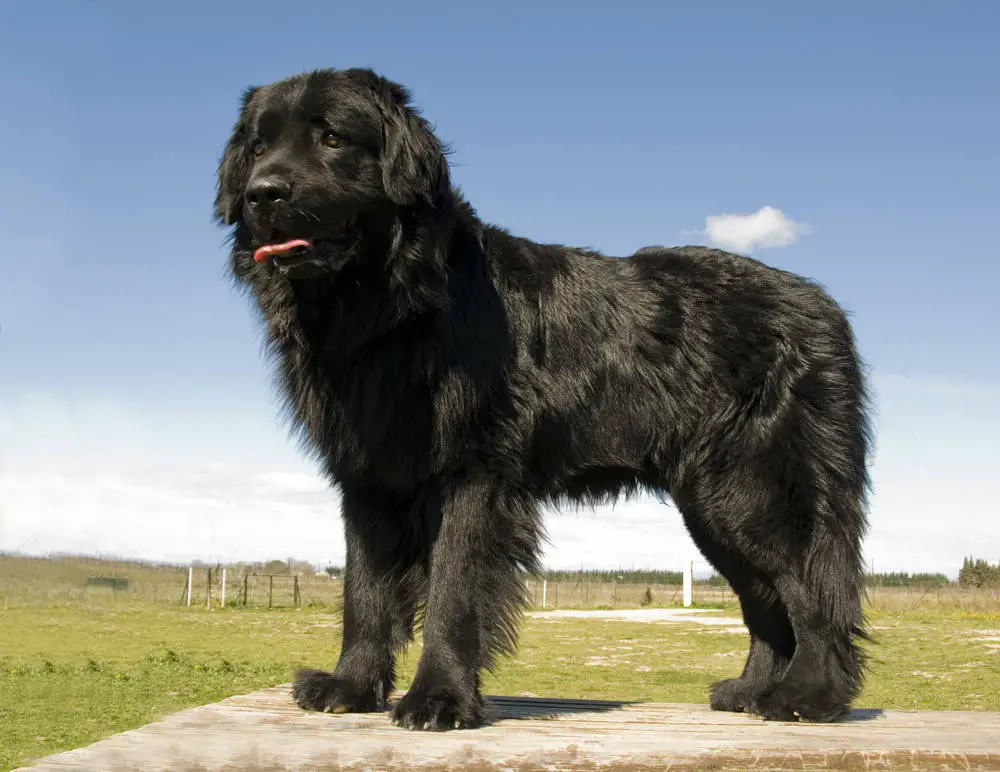
The Newfoundland is one of the largest dog breeds and easily weighs around 150 lb. These massive dogs are large and powerful with a regal bearing. Despite their large size, these dogs are very sweet tempered and extremely patient, especially with kids.
It’s not surprising that this gentle giant has a huge appetite and asks for food constantly, so it is very easy to overfeed them. And, because of his size, the weight can pile on without you realizing it. So, it is important not to overfeed your Newfoundland and control his calorie intake.
While Newfoundlands were originally bred as working dogs and have a lot of stamina and endurance, if you allow it, they will become lazy. These dogs benefit a great deal from long walks and lack of exercise can cause problems such as elbow and hip dysplasia, which can get worse due to obesity.
Chihuahua
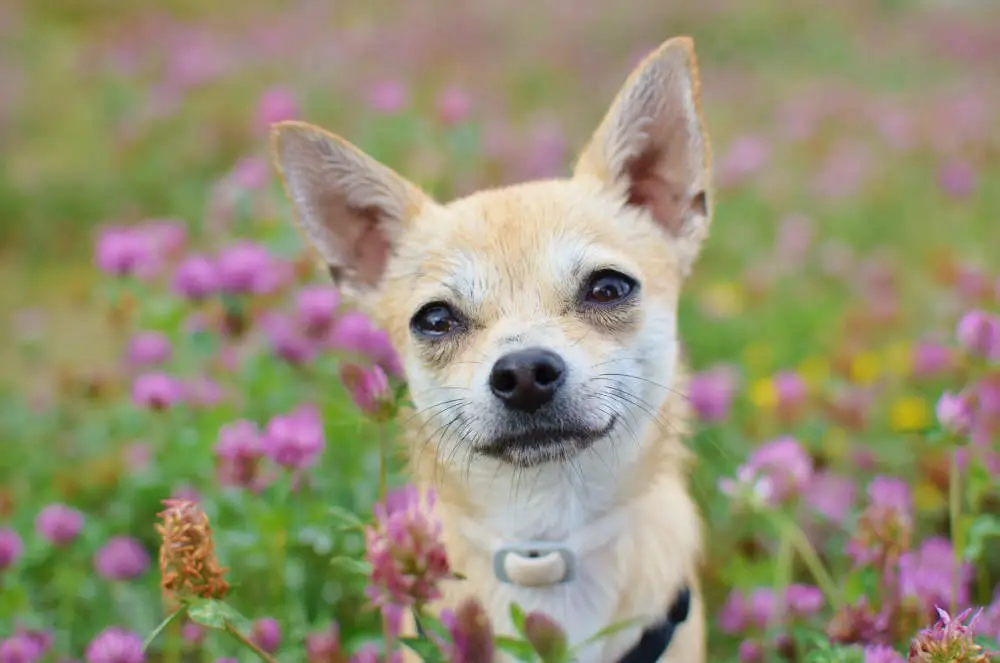
Although this tiny, petite dog breed is small, he has a huge personality that compensates for his size. This charming, tote-sized dog is hugely popular with pet owners. However, because the Chihuahua is petite in size, it is extremely easy to indulge this pooch and overfeed them.
These tiny dogs, typically weighing around 5 to 6 lb require very limited calories per day in order to maintain their healthy weight and any small increase can cause them to gain weight, become obese and lead to serious health issues.
Also, because they are so small, generally, pet owners tend to carry their Chihuahua everywhere, limiting the amount of exercise the dog gets.
While Chihuahuas don’t require a lot of exercise, nevertheless, they should not be completely sedentary. They are quite active and playful and you should encourage your pet to play both outdoors, as well as indoors.
Also See: 19 Calm Small Dog Breeds You Will Love
Final Word
Dog obesity is a serious problem and can have serious, long-term consequences on your pooch’s health. Many serious diseases are linked to obesity such as heart, liver, lung and kidney disease, different types of cancers and also ailments such as hip dysplasia, arthritis, etc. that can hamper your pet’s mobility. In short, obesity can reduce your dog’s quality of life, as well as lifespan.
As pet owners, you should ensure that you have a healthy diet and exercise plan to reduce your dog’s weight if he is overweight or obese. Consult your vet to determine how you can control your pet’s diet and reduce his calorie intake while increasing his exercise and other activities.
Regular monitoring and modifications to your pet’s exercise routine and diet can help to keep him lean and fit. Adopt a low-impact exercise program like walking, playing in the park, tossing the ball, etc. that your pet will enjoy and slowly increase the activity levels and duration so that your pet becomes accustomed to it.
In short, if your pet is active and has a healthy weight, he is sure to be more active and fit and live a long, healthy life with you and your family.
